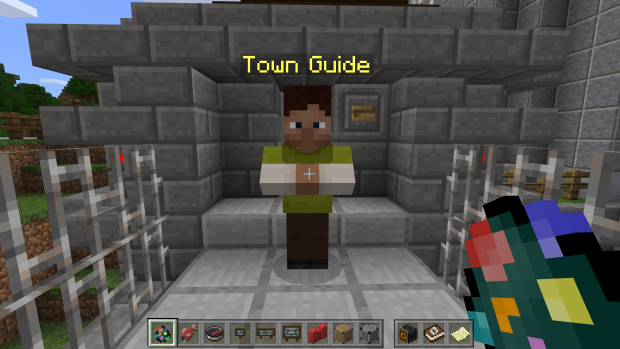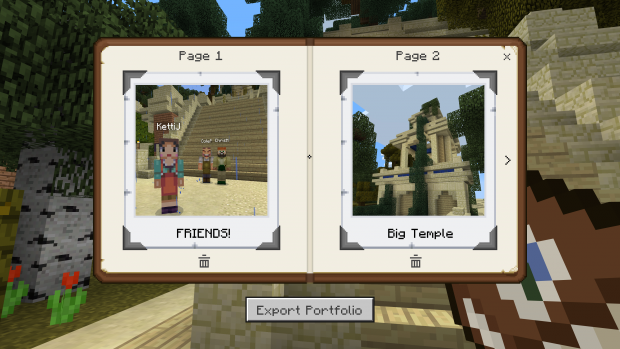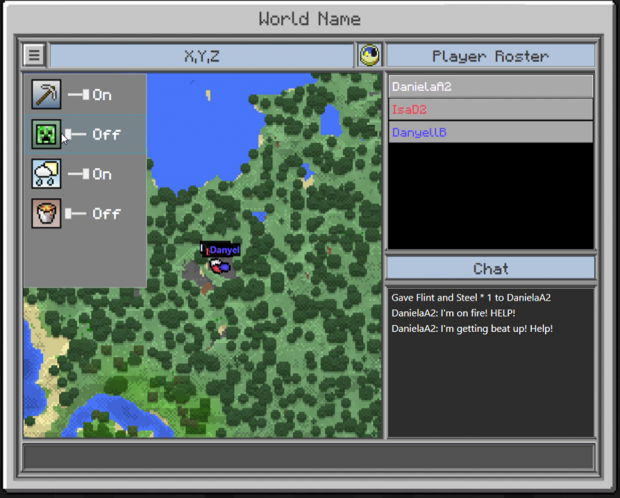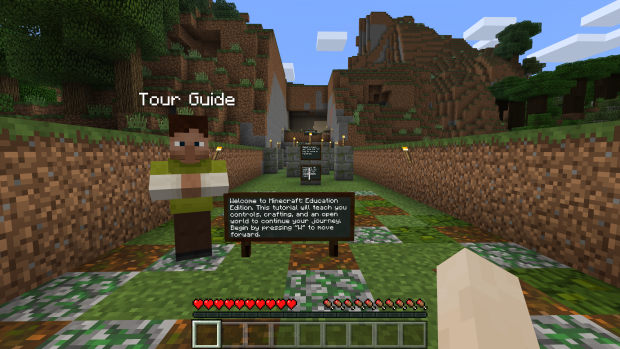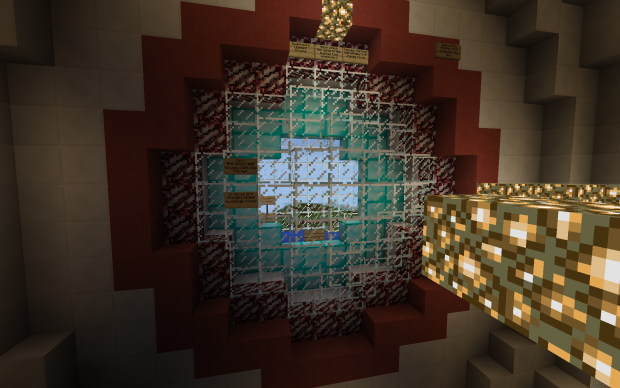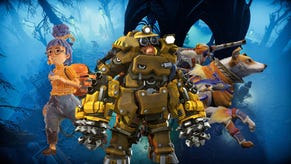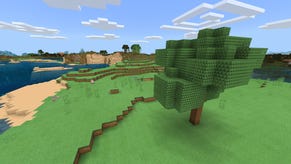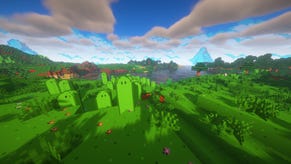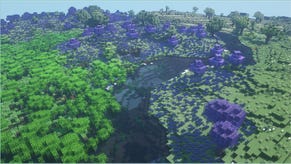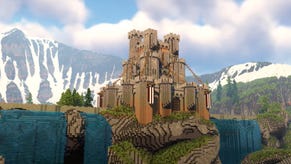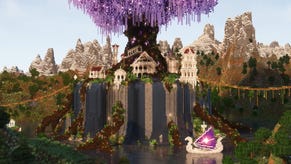Should kids be taught in schools using Minecraft?
We asked the experts
“The 14-year-old me was weeping inside” says Tom Bennett, the UK government’s school behaviour tsar. He’s recalling the time that Ian Livingstone – the co-creator of both Games Workshop and Fighting Fantasy, the series of role-playing books – called him a “luddite”. “It really upset me, I used to love the books and the games that came from them.”
The reason Bennett became the target of Livingstone’s ire is because of his views on Minecraft in classrooms. Last November, Microsoft released Minecraft: Education Edition, an enhanced version of the game that has extra tools for teachers to plan and set up lessons, whether that’s recreating a Shakespeare play or building the Great Pyramids. They can build worlds faster than usual, monitor their students’ activity and help them build online portfolios of their work. In an interview with The Times shortly after, Bennett said that the game was a “gimmick” that would “get in the way of children actually learning”.
The topic of Minecraft in schools sparks a lot of passion on both sides of the debate: some teachers, academics, and Microsoft itself believe that Minecraft can change the way children learn. By giving kids lessons inside a tool that they’re excited about, they will learn more, the argument goes. But Bennett and others say that in-game lessons hinder children’s learning by distracting from the subject matter at hand. The question is: how do we know who’s right? And, as Microsoft prepares for the first full school year since the Education Edition launched, what does the future of Minecraft in schools look like?
The appeal of Minecraft: Education Edition is obvious. Adam Chase teaches Year 5 students at Old Hall Primary School in Bury, and first used Minecraft in the classroom after he heard his students talking about the game. “We spend so much time trying to get children interested in stuff, and they were already interested, so I thought I might as well use it,” he tells me.
He’s built the Pyramids of Giza when teaching about Ancient Egypt, and an Anglo-Saxon village in History. But he’s used it in more imaginative ways as well: when teaching his class about Philip Pullman's The Firework-Maker's Daughter, his students collaboratively built the volcano from the book in which a fire god lives. They then walked through it one by one and described the experience. “Living in Bury, it’s quite hard to describe what it’s like to walk inside a volcano and meet a fire god,” he says. “It’s a little bit easier once you’ve built the volcano, which collaboratively took them half an hour.”
He’s also used it in Biology. Students told him that crops in Minecraft grew in seawater, so he decided to debunk the myth during a class on plants and soil by asking them to grow plants in salty water. The plants withered and died, and the experiment formed the basis of a lesson. In other words, he had successfully used Minecraft as a hook for a complex topic.
He admits that part of using Minecraft is to “trick” students to enjoy material they’d normally find boring, but says the results elevate it above mere gimmick. The key for Chase is how passionate kids are about their work in Minecraft. For one of his class’s regular reports for the headmaster they produced an ‘Idiot’s guide to Minecraft’. “They loved it, and it was the best piece of writing they’ve ever produced for me,” he says.
Plus, it’s got individual children to try new things: one girl who excelled in every subject except art is now passionate about design. “She says her hands don’t do what her brain wants them to, but in Minecraft she can do it, so she’s enjoying the engineering side. Another student used Minecraft to complete some homework on natural disasters: “He created a tsunami frozen in time ready to hit a Japanese town. He spent four hours on it, this lad never spends four hours on his homework. He’d looked at pictures of Japanese villages and applied it, and he’d also made a tsunami proof shelter.”
Chase sees immediate results from using Minecraft in his classroom – but it’s not nearly enough to convince Bennett and others that it should be used more widely.
I must admit, I half expected Ian Livingstone to be right about Bennett before I met him. It’s not hard to think of someone you know that would immediately pooh-pooh the idea of using Minecraft in a classroom just because it’s a video game. But he’s not anti-games at all.
“I lost months of my life to Tomb Raider and Doom,” he says. “When it got to the fourth generation of Doom I lost interest – once you stopped seeing the pixels I thought, ‘This is getting too much for me’. I remember making a conscious decision when I was about 30 that I had to stop because it was taking up too much of my time.”
Bennett’s objection to Minecraft in schools is twofold: first, that it distracts children from the subject they’re trying to learn; and second, that it is unevidenced as a teaching approach. “I absolutely get the impulse that drives people to want to play games, and I get the impulse for teachers to make their teaching more engaging, exciting and relevant. I’ve done it for 15 years myself, you’re constantly looking for hooks.
“The danger is that the hook becomes the lesson, and what they’re thinking about is the way you’ve framed the lesson rather than the content itself. The danger is that you make it all about the Minecraft, and subtly and unintentionally you undercut the importance of the learning because you’re almost saying: ‘This is like nasty medicine, but I’ll give you some sugar as well.’”
He admits he’s used similar methods in the past when he was still a teacher. As a movie buff, he used to sit Philosophy classes down in front of The Good, The Bad and The Ugly or Inception. “But then I realised I was wasting two hours of my life and I was letting my love of movies wash over my perspective on how to teach.”
Bennett is right about the lack of evidence for the use of Minecraft. There has been no large-scale studies on the use of Minecraft in classrooms that I’ve come across either from trawling the net or browsing the list of studies that Microsoft itself provided me (which is nonetheless worth glancing over).
However, there is a much larger body of research on the use of games more generally in learning. Numerous books and research papers have been published on the topic – which I’ll get onto in a bit more detail later – but Bennett remains unimpressed. “I’ve found most of the research was almost exclusively generated in very small groups and on a very short-term basis, and often the impact was shown by qualitative evidence, asking the kids how they feel,” he says.
“A lot of the research is very enthusiastic and breathless. I’m not saying it’s not true, there’s just very weak evidence. You wouldn’t market a drug on that basis, or a medical technique.” Bennett is worth listening to on the use of evidence in education. As well as advising ministers he runs ResearchED, a non-profit organisation that tries to make teachers more research literate. But other academics disagree with him.
Joel Mills teaches at the University of Hull, where he is the interim deputy director for learning enhancement. He’s also a Minecraft Mentor, part of a 60-strong network of teachers worldwide that support other educators to use the game in their classroom.
His love of the game as a teaching tool, like Adam Chase in Bury, was inspired by a student. Now, he teaches higher education students in Minecraft worlds. For example, he recently created an accurate digital representation of a medieval dig site using satellite data. Archaeology students had to explore it in-game and, using their own knowledge, recreate a building from the site.
"It spawns conversations with the students, it gives them leads into the knowledge without spoon feeding it to them,” he says. “If you tap into that passion learning comes second nature, because you're engaged with what the subject matter is.”
Some teachers use it incorrectly, he admits, simply transferring work sheet tasks onto text blocks in the game. Minecraft works best when students can communicate ideas where normally they might find it difficult, he says. “Because it's a sandbox game, it creates an opportunity for students to show what's in their head. They can quickly show their ideas where they might not be able to draw them or test them out. It's a rapid prototyping tool in that sense.”
He takes exception to Bennett calling the game a “gimmick” – lots of the technology that is used in classrooms now, like interactive whiteboards and even projectors, initially received similar labels, he argues. “If people say it's a gimmick they usually don't understand the full potential. The way we engage with information is constantly evolving, and the people that can't keep up are often the biggest critics. I'd certainly be happy to stand in a room with Tom [Bennett] and say that to him.”
He believes the evidence for videogames in the classroom is “overwhelming”, pointing me to a number of examples, including popular books by academics James Paul Gee and Marc Prensky. However, the largest studies on the topic have produced mixed results. A meta-analysis of the evidence in 2014 by research group GlassLab, part-funded by the Bill & Melinda Gates Foundation and the MacArthur Foundation, found that “digital games significantly enhanced student learning relative to the non-game control conditions”. However, a review of the literature a year earlier found that “despite some promising results, the current literature does not evidence adequately the presumed link between motivation, attitude to learning and learning outcomes”.
And besides, even if the evidence for game-based learning was undisputed, the lack of evidence around Minecraft specifically could hinder its progress. And on top of that you have the more principled objection: that it’s detracting from valuable material that could be taught better and cheaper (the Education Edition costs $5 per head per year) using other methods.
Mike Taylor teaches humanities at the Michaela free school in Wembley, north-west London. It’s one of the most deprived areas of the capital, and more than a third of students are eligible for free school meals. Nearly 40% have English as a second language. The school takes a no-nonsense approach: it’s been dubbed “Britain’s Strictest School” by the national papers because of its tough behaviour rules. And, although it has not yet had a set of GCSE results (it was founded in 2014), it received the highest possible Ofsted rating in an inspection in June: Outstanding in all categories.
Other teachers speak about “engaging” their students through Minecraft – but Taylor dismisses the idea. Students must interact directly with the content of a lesson for it to sink in, he says, making Minecraft in classrooms “one of the worst ideas you could have”.
“The content of a Shakespeare play is intrinsically interesting because it’s about human nature, and love, and conflict. By dressing it up in a computer game you’re detracting from it. Teaching Shakespeare to a bunch of poor kids from North West London is very hard, absolutely, so teacher’s naturally want to find shortcuts to get the kids engaged. But as soon as you use the word engagement, you’ve lost the battle.”
Using Minecraft in schools with poorer kids is a particularly bad idea, he argues, because wasted time is more difficult to get back than with children from richer backgrounds. “Really rich kids, your David Camerons of the world, they can sit around chucking playdough at each other and still be very successful. The very poor kids don’t know how to read and write, they have 40% less vocabulary than the rich kids, and we’re too busy sitting them at a computer and thinking of ways to engage them, a la Minecraft.”
On top of these objections there are problems with the Education Edition itself. Its birth, following Microsoft’s purchase of Mojang, spelled the death of MinecraftEdu, an open-source tool that teachers had been using for years. It’s no longer available to download and its final update was more than a year ago.
The University of Hull’s Mills says that Minecraft: Education Edition lacks some of the features that made MinecraftEdu so easy to use. He’s confident that Microsoft are listening to mentors like him however, and having spoken to the company directly it’s clear to me that they are keen to iron out the creases. Neal Manegold, senior manager of Minecraft Education, says the team behind the game are trying to improve the product to make it ready for the mainstream. He’s very wary of “growing too fast”, and is clear that he doesn’t think Minecraft is education’s “panacea”.
“This upcoming year is really our first year where people have it at scale. I’m going to feel like we’ve entered the race a year from now,” he tells me. He is focussing efforts on subjects that Microsoft believes teachers could most use help in, like physics, chemistry and biology. “I also think of the subjects that are left behind when push comes to shove – music, visual arts, dramatic arts and theatre. We’ve seen work where students rebuilt the Globe Theatre and acted out an actual Shakespeare play [in Minecraft]. They even go backstage and change their skins for different scenes. I see all the project management and architecture that goes into building a theatre, and all of the video production that went into producing the video piece.”
He’s not shy about addressing criticisms about its use in schools, too. On the lack of research of Minecraft’s effectiveness, he says: “It’s a fair critique. In education, especially in the technology wing of education, we run into this all the time, where something is new and different, educators feel it works, but the research always seems to lag.
“We have some early case studies out of the gate, we’re also going to be engaging in more large-scale research over this year.” That will include Minecraft’s impact on “21st century skills”, such as teaching students to negotiate and collaborate – “things that will serve them well regardless of their career choice”.
That research, supplemented by the work of others (Mills says he’s conducting his own research in Hull) could prove crucial for the future of Minecraft, and determine just how big the Education Edition grows beyond its current 150,000-user base of teachers and students in more than 100 countries.
It could go some way to silencing the detractors, too. Bennett and Taylor say they’re both willing to change their mind if the right evidence comes along. “I’d like to see teachers work with gaming companies to test this in the field,” Bennett says. “What would be great would be a really large-scale trial of these types of interventions run by independent experts that are willing to publish if the results aren’t very good, or are inconclusive.”
And if the research suggests that Minecraft really does help children learn more effectively, then who knows – Bennett and Ian Livingstone may well find they have more in common than just their love of role-playing games.



